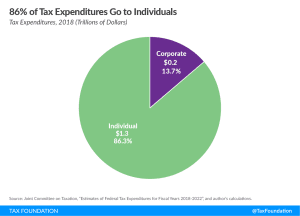
All Related Articles


Insights from the UN World Investment Report for Global Tax Reform
The United Nations (UN) recently released its annual “World Investment Report,” which shows the dramatic fall in global foreign direct investment (FDI) caused by the COVID-19 crisis.
3 min read
Biden Plan’s Higher Taxation of Businesses Would Boost Collections to Highest in 40-Plus Years
President Biden’s tax proposals released as part of his fiscal year 2022 budget would collect about $2 trillion in new tax revenue from businesses over 10 years. This new revenue would bring income tax collections on businesses as a portion of GDP to its highest level on a sustained basis in over 40 years.
2 min read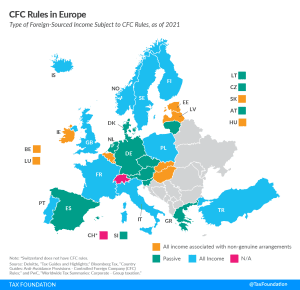
CFC Rules in Europe
To prevent businesses from minimizing their tax liability by taking advantage of cross-country differences, countries have implemented various anti-tax avoidance measures, such as the so-called Controlled Foreign Corporation (CFC) rules.
5 min read
Property and Sales Taxes Are a Major Driver of Corporations’ State and Local Tax Burdens
As policymakers consider ways to improve their tax structure to encourage business investment and promote economic growth, corporate income tax rate reductions are a crucial part of that conversation, but they shouldn’t be the only consideration.
6 min read
Biden’s Tax Proposals Could Impact Small Businesses Over Time
The Biden administration has primarily focused on increasing taxes on top earners to generate revenue to fund its spending priorities. However, these proposals would hit many pass-through businesses and much of pass-through business income, including small businesses, family-owned businesses, and farms.
3 min read
Anti-Base Erosion Provisions and Territorial Tax Systems in OECD Countries
From a policy perspective it is appropriate to combat base erosion and profit shifting, but policymakers need to keep in mind the need for simplicity to avoid increasing the compliance burden on taxpayers and administrative burdens on tax authorities.
68 min read
Biden’s Top Marginal Capital Gains Tax Rate Would Be Highest in OECD
President Biden’s proposal to tax capital gains at higher, ordinary income tax rates would lead the U.S. to have the highest top marginal tax rate on capital gains in the OECD.
2 min read
North Carolina’s Tax Competitiveness
Tax reform has paid off for the Tar Heel State. North Carolina features one of the nation’s most competitive tax environments for businesses across the industry spectrum, and the state currently boasts the nation’s third-best effective tax rates for newly established firms and fifth-best rates for mature firms, according to a new analysis conducted by the Tax Foundation and KPMG LLP.
7 min read
Semiconducting Tax Policy
If you’ve read any headlines in the last few months, you’ve no doubt heard about the semiconductor shortage gripping global supply chain—and if you’ve tried to buy anything from a toaster to a car, you’ve witnessed it firsthand. But what’s really driving today’s crisis, can the U.S. manufacture its way out of it, and what role does tax and economic policy have to play in all this?

What’s in Arizona’s Tax Reform Package?
After weeks of deliberations, Arizona Gov. Doug Ducey signed into law a budget for fiscal year (FY) 2022 that reduces the state’s individual income tax rates and consolidates brackets, a plan that will help restore Arizona’s reputation as a low-tax alternative to California.
7 min read
Michigan Looks to Lower Corporate Income Tax Rate to Improve State Competitiveness
Michigan lawmakers are considering lowering the corporate income tax rate to alleviate the tax burden on businesses still emerging from the pandemic and to make the state more competitive.
2 min read
State and Local Tax Structure Has a Critical Impact on Corporate Tax Burdens
While high top tax rates may provide “sticker shock” for corporations looking for a state to call home, they are just one of several important drivers of businesses’ tax burdens and tax compliance costs.
5 min read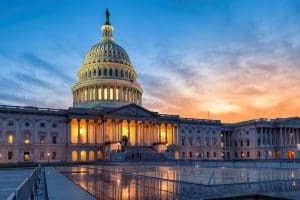
Policymakers Offer Proposals to Fix Three Upcoming Tax Changes
Three upcoming tax law changes scheduled by the 2017 Tax Cuts and Jobs Act (TCJA) to help offset its revenue losses would be canceled by proposed legislation that would prevent the tax treatment of investment from worsening over the coming years.
4 min read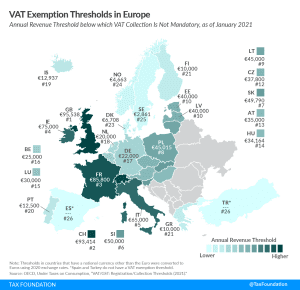
VAT Exemption Thresholds in Europe
To reduce tax compliance and administrative costs, most countries have VAT exemption thresholds: If a business is below a certain annual revenue threshold, it is not required to participate in the VAT system.
2 min read
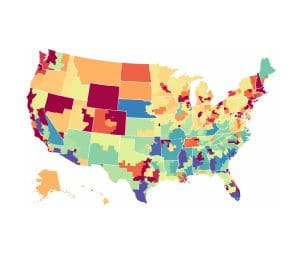
The Impact of the Biden Administration’s Tax Proposals by State and Congressional District
The redistribution of income from the Biden administration’s tax proposals would involve many winners and losers, not only across different types of taxpayers but also geographically across the country. Launch our new interactive map to see average tax changes by state and congressional district over the budget window from 2022 to 2031.
8 min read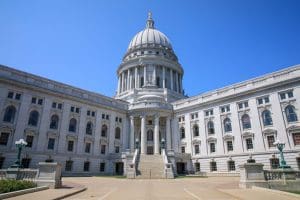
Wisconsin Legislature Considering Several Pro-Growth Tax Reforms
Reducing the second-highest individual income tax rate, repealing the TPP tax, and freezing UI tax rates are three valuable reforms that would help promote a smooth economic recovery in Wisconsin while setting the state up for robust economic growth for years to come.
6 min read
U.S. Corporate Tax Expenditures and Effective Tax Rates in Line with OECD Peers
Last week, an analysis by Reuters suggested that U.S. firms pay less income tax than foreign competitors, in part because “the U.S. tax code is unusually generous with tax breaks and deductions,” also known as corporate tax expenditures. However, the Reuters analysis is at odds with other data and studies indicating that U.S. corporate tax expenditures and effective tax rates are about on par with those in peer countries in the OECD.
3 min read
State Tax Changes Taking Effect July 1, 2021
Thirteen states have notable tax changes taking effect on July 1, 2021, which is the first day of fiscal year (FY) 2022 for every state except Alabama, Michigan, New York, and Texas. Individual and corporate income tax changes usually take effect at the beginning of the calendar year for the sake of maintaining policy consistency throughout the tax year, but sales and excise tax changes often correspond with the beginning of a fiscal year.
11 min read